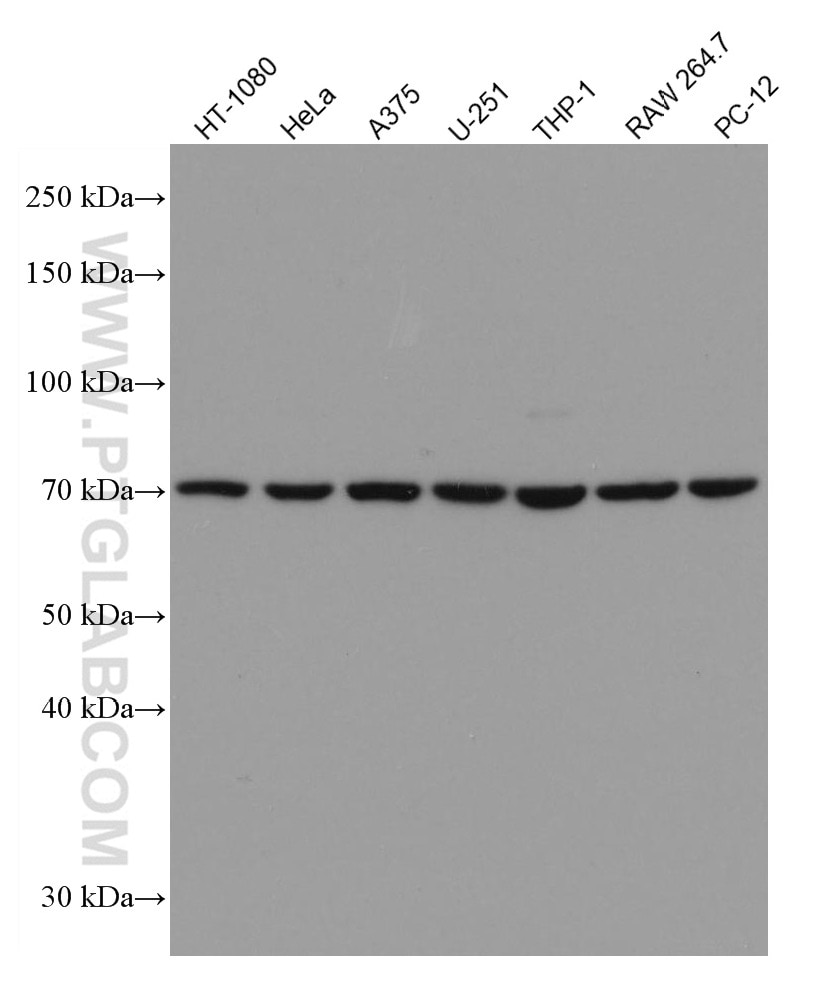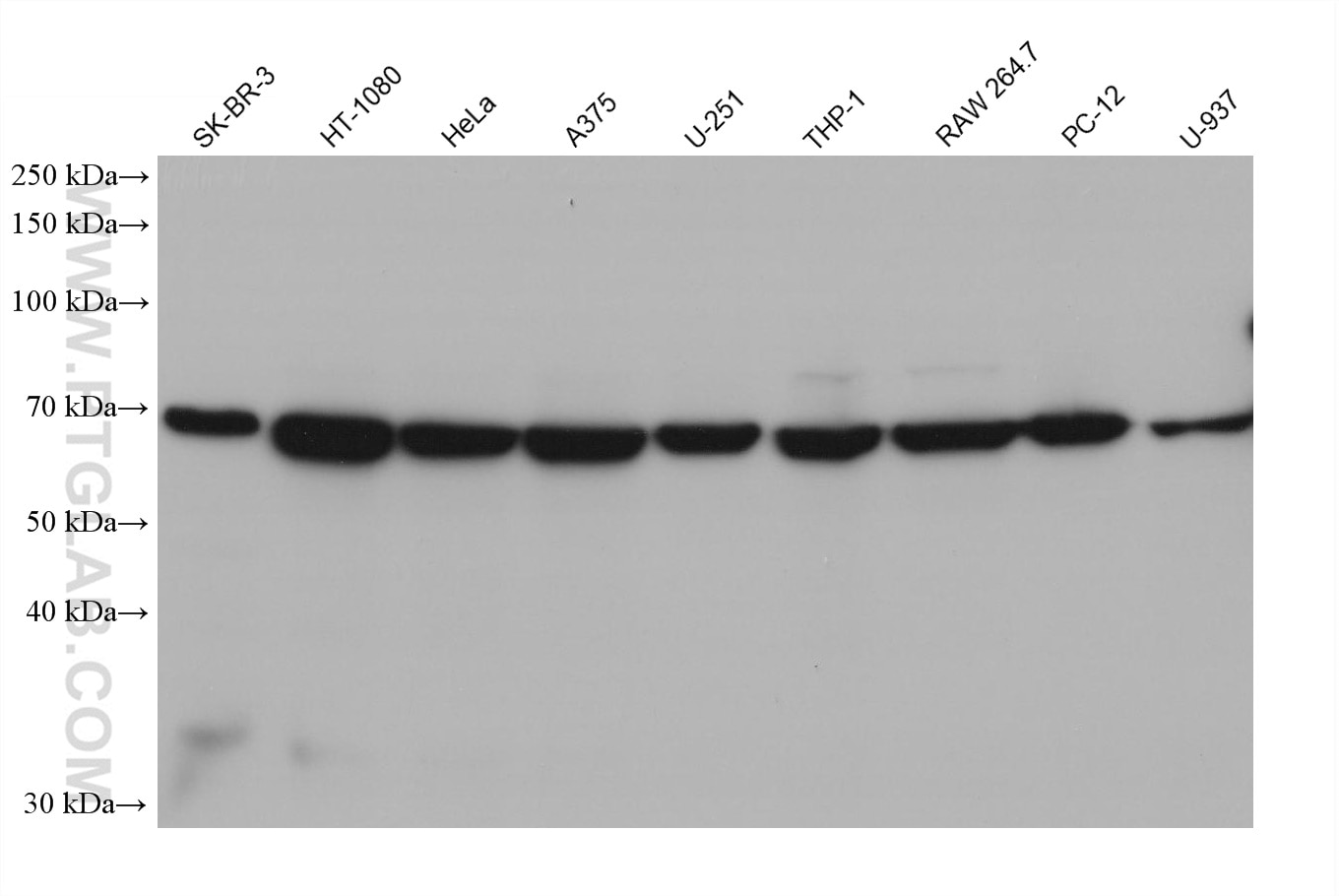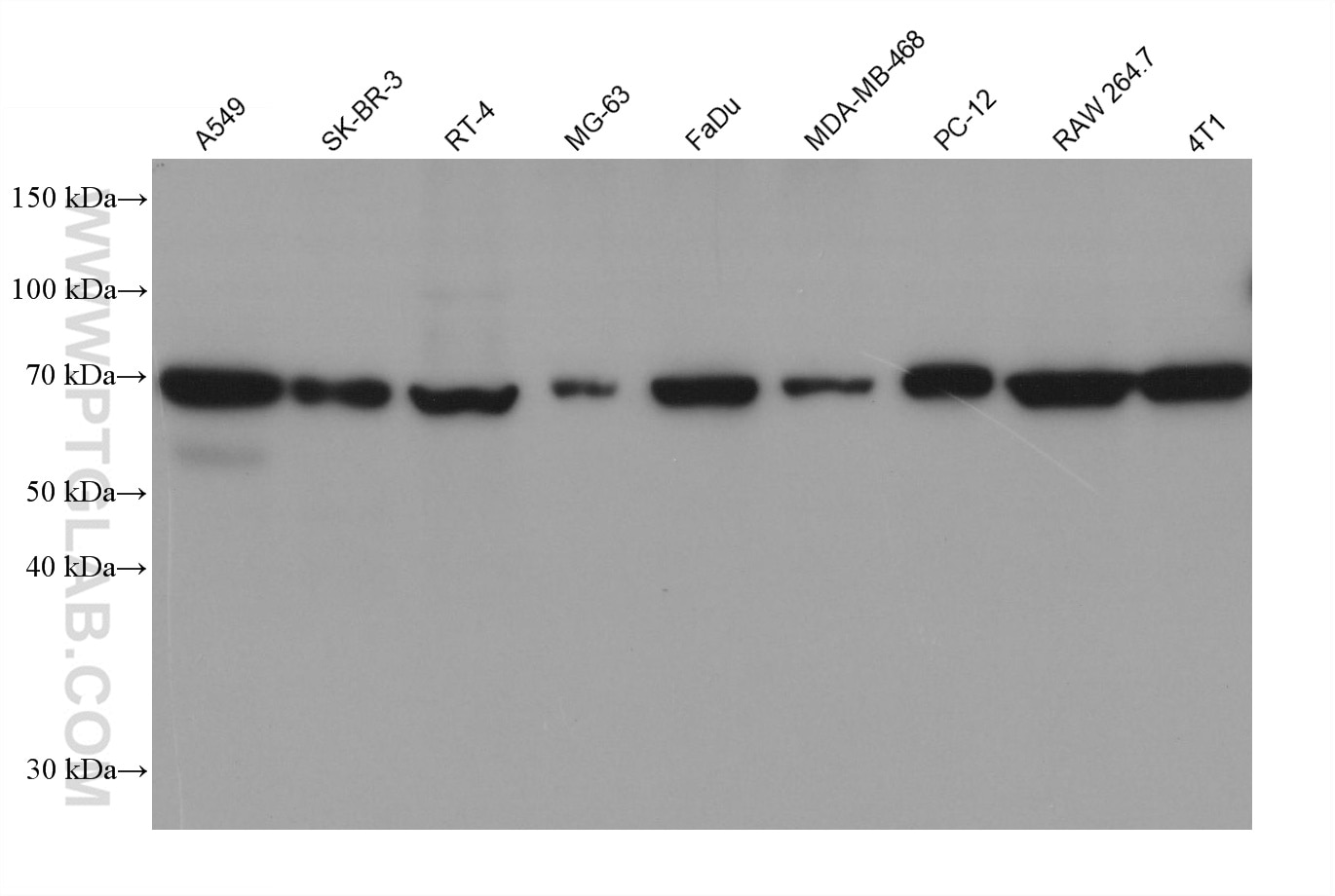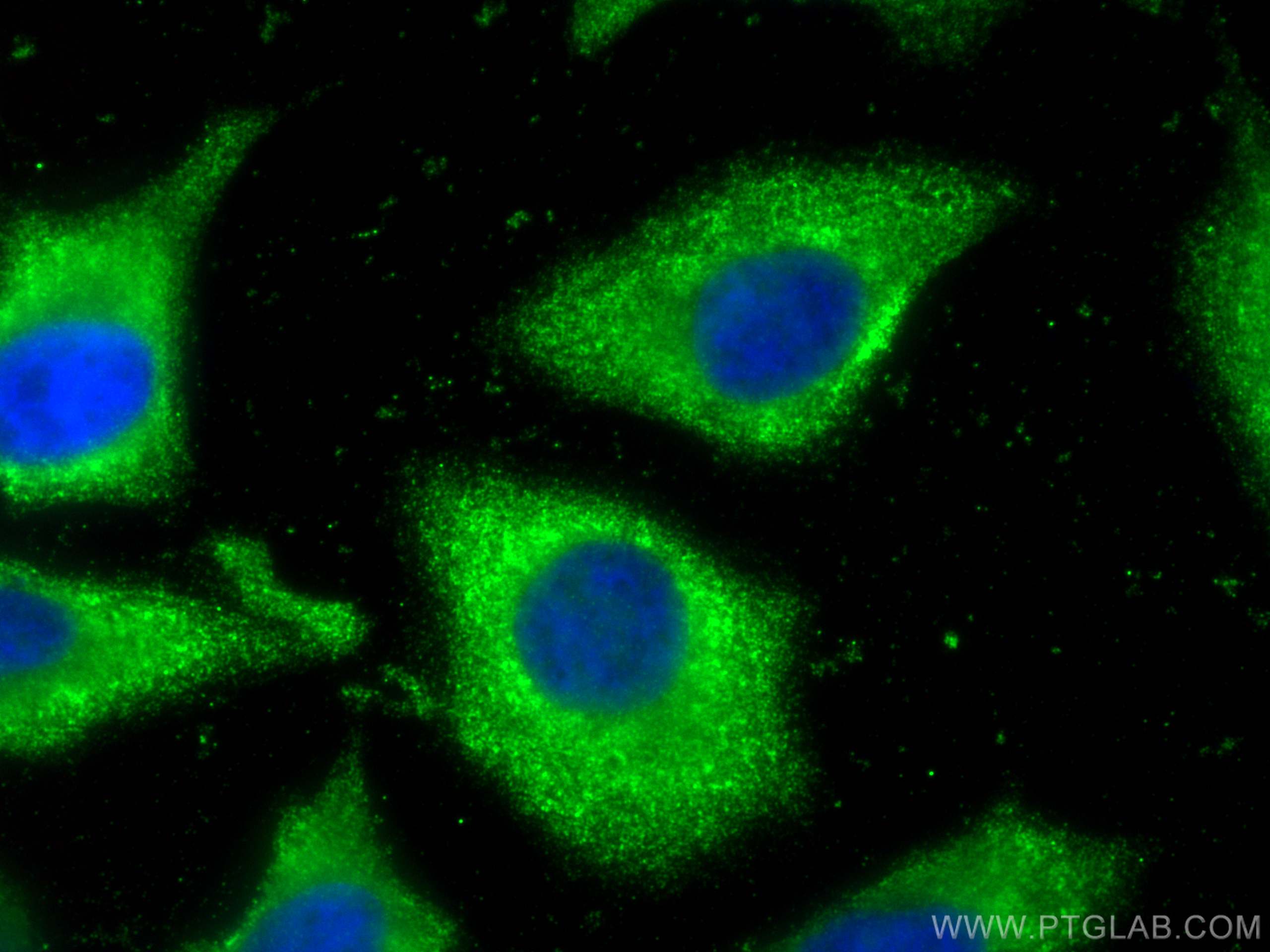Anticorps Monoclonal anti-GPNMB
GPNMB Monoclonal Antibody for WB, IF/ICC, ELISA
Hôte / Isotype
Mouse / IgG1
Réactivité testée
Humain, rat, souris
Applications
WB, IHC, IF/ICC, ELISA
Conjugaison
Non conjugué
CloneNo.
2B10B8
N° de cat : 66926-1-Ig
Synonymes
Galerie de données de validation
Applications testées
| Résultats positifs en WB | SK-BR-3 cells, cellules 4T1, cellules A375, cellules A549, cellules HeLa, cellules HT-1080, cellules MDA-MB-468, cellules PC-12, cellules RAW 264.7, cellules THP-1, cellules U-251, cellules U-937 |
| Résultats positifs en IF/ICC | cellules HeLa, |
Dilution recommandée
| Application | Dilution |
|---|---|
| Western Blot (WB) | WB : 1:5000-1:50000 |
| Immunofluorescence (IF)/ICC | IF/ICC : 1:125-1:500 |
| It is recommended that this reagent should be titrated in each testing system to obtain optimal results. | |
| Sample-dependent, check data in validation data gallery | |
Applications publiées
| WB | See 6 publications below |
| IHC | See 4 publications below |
| IF | See 5 publications below |
Informations sur le produit
66926-1-Ig cible GPNMB dans les applications de WB, IHC, IF/ICC, ELISA et montre une réactivité avec des échantillons Humain, rat, souris
| Réactivité | Humain, rat, souris |
| Réactivité citée | rat, Humain, souris |
| Hôte / Isotype | Mouse / IgG1 |
| Clonalité | Monoclonal |
| Type | Anticorps |
| Immunogène | GPNMB Protéine recombinante Ag26747 |
| Nom complet | glycoprotein (transmembrane) nmb |
| Masse moléculaire calculée | 64 kDa |
| Poids moléculaire observé | 64-70 kDa |
| Numéro d’acquisition GenBank | BC011595 |
| Symbole du gène | GPNMB |
| Identification du gène (NCBI) | 10457 |
| Conjugaison | Non conjugué |
| Forme | Liquide |
| Méthode de purification | Purification par protéine G |
| Tampon de stockage | PBS with 0.02% sodium azide and 50% glycerol |
| Conditions de stockage | Stocker à -20°C. Stable pendant un an après l'expédition. L'aliquotage n'est pas nécessaire pour le stockage à -20oC Les 20ul contiennent 0,1% de BSA. |
Informations générales
GPNMB also known as HGFIN, osteoactivin, and DC-HIL, is a type I membrane glycoprotein involved in various biological processes, including inflammation, invasion and metastasis of malignant tumors, cell differentiation, and tissue regeneration. GPNMB shows expression in the lowly metastatic human melanoma cell lines and xenografts but does not show expression in the highly metastatic cell lines. GPNMB acts as an osteogenic factor that stimulates osteoblast differentiation in vivo and in vitro.
Protocole
| Product Specific Protocols | |
|---|---|
| WB protocol for GPNMB antibody 66926-1-Ig | Download protocol |
| IF protocol for GPNMB antibody 66926-1-Ig | Download protocol |
| Standard Protocols | |
|---|---|
| Click here to view our Standard Protocols |
Publications
| Species | Application | Title |
|---|---|---|
Int Immunopharmacol Lactic acid-induced M2-like macrophages facilitate tumor cell migration and invasion via the GPNMB/CD44 axis in oral squamous cell carcinoma | ||
PLoS Negl Trop Dis Mining host candidate regulators of schistosomiasis-induced liver fibrosis in response to artesunate therapy through transcriptomics approach | ||
medRxiv Plasticity of Human Microglia and Brain Perivascular Macrophages in Aging and Alzheimer's Disease | ||
Hum Vaccin Immunother Nanovaccine loaded with seno-antigen target senescent cells to improve metabolic disorders of adipose tissue and cardiac dysfunction | ||
Immunity Direct microglia replacement reveals pathologic and therapeutic contributions of brain macrophages to a monogenic neurological disease | ||
Cancers (Basel) TROP-2, Nectin-4, GPNMB, and B7-H3 Are Potentially Therapeutic Targets for Anaplastic Thyroid Carcinoma |
Avis
The reviews below have been submitted by verified Proteintech customers who received an incentive for providing their feedback.
FH Victor (Verified Customer) (06-16-2025) | Staining with the GPNMB antibody on myeloid cells using the recommended concentration for immunofluorescence is highly specific. The signal shows minimal background noise and appears very clear and distinct.
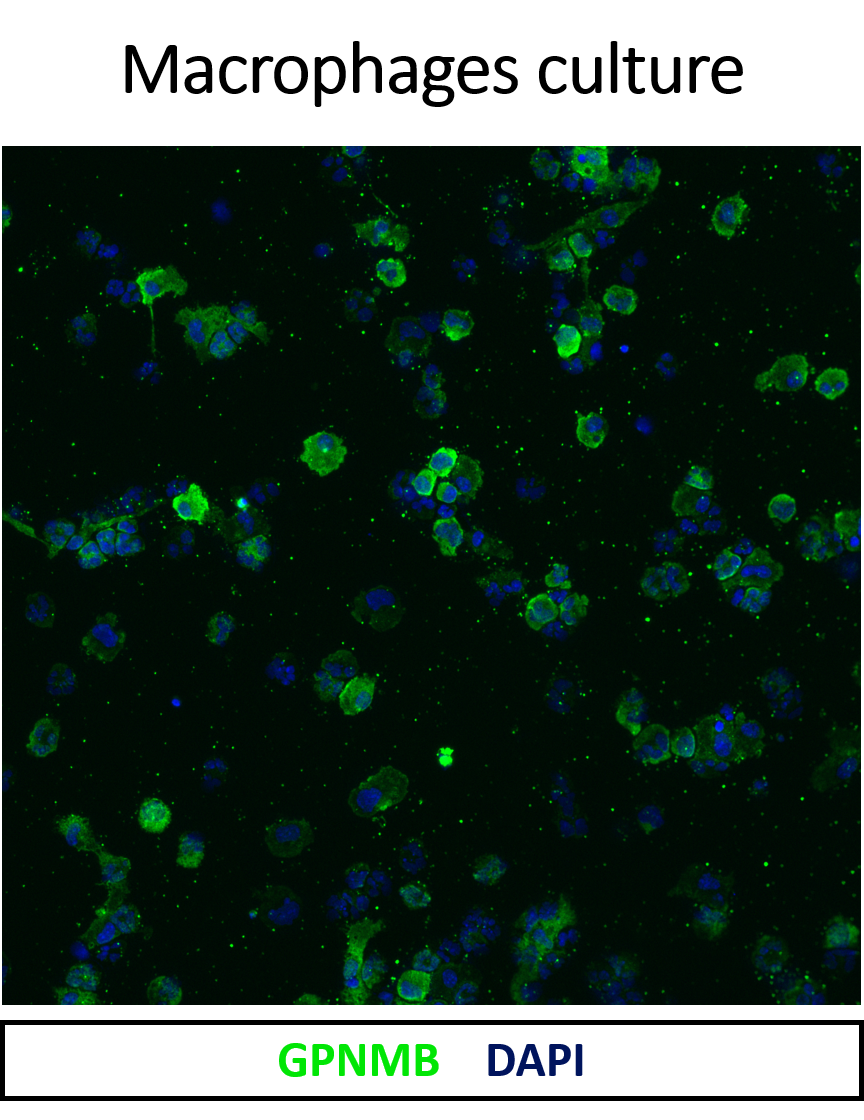 |
